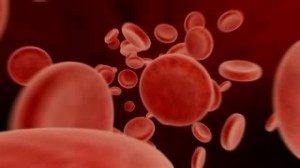PRP Injections in Arizona
PRP (Platelet Rich Plasma) injections represent a newer form of therapy, where substances taken from a person’s own body are used to treat tissues that are damaged or injured. Referred to as autologous blood therapy, a person’s own blood components are used to stimulate healing.

When a person is injured, blood platelets and white blood cells work together to promote healing. The growing factors found in platelets are released in greater numbers when the body’s tissues are harmed. PRP injections allow medical professionals to take concentrated platelets from a person’s blood and the growth factors induced by them and inject them into parts of the body that have been injured or damaged. Doing so helps to naturally promote healing.
What is PRP Therapy?
PRP therapy signifies a huge leap forward in the field of orthopedic treatment. PRP injections make it possible for orthopedic specialists to treat individuals with tissue damage and/or injury in a way that is less invasive and less risky. This could mean a less painful recovery for patients.
PRP injection therapy is the first-ever form of regenerative treatment for soft tissue, muscle, ligament or tendon damage or injury. The growth factors released by the platelets help to stimulate healing and the growth of new tissue. Over time, the new tissue will start to shrink. This shrinkage will result in the ligament, muscle and/or tendon becoming tighter and stronger.
Why Use Platelet Injections?
Platelet injections are ideal for individuals who would prefer a less invasive form of treatment. Until therapies such as platelet injections were made available, individuals who had severe enough tissue damage or injury were often forced to undergo surgery. This is very painful and recovery times quite long in some cases. How well the tissue or ligament was repaired, depended upon the skill and experience of the doctor who performed the surgery.
PRP injections allow the body to take over the healing process. Injecting concentrated platelets into damaged tissue and/or ligaments, where growth factors take over, jumpstart the healing process. This type of therapy takes much of the pain out of the recovering process, because it doesn’t require surgery and subsequent, painful rehabilitation.
It will be important for individuals considering PRP therapy, to do their best to find a doctor who has some experience in this area. Admittedly, this can be difficult because this type of treatment is so new. However, whether or not a person has the best possible outcome, will be determined in large part, by the skill and experience of the person providing the PRP injection therapy.
Are PRP Injections Safe?
Platelet injections are considered to be safe. No foreign substances are being injected into the body, only ones that occur naturally in the body. This is one of the reasons that people are so excited about the possibilities that PRP therapy represents.
Research studies and clinical trials support the contention that platelet injection therapy is safe. The risks are minimal that any type of complication or negative reaction will occur. Because no foreign objects or substances are being injected into the body, there is no risk of it rejecting the treatment and no disease transmission risks. The only noted risk, and it is a small one, is that the injection might cause some type of infection to develop. This is not unique to platelet injection therapy. Any time a person has an injection, they are at risk for developing some sort of infection
PRP Injection Procedure
PRP injection therapy involves a doctor drawing a patient’s own blood, which is placed in a centrifuge. The PRP is extracted using a multi-step process. The platelets are concentrated and then injected into the damaged or injured part of the body, oftentimes using ultrasound. The number of times an individual will need to have this procedure done will depend on the seriousness of their injury and the body’s response to the treatment. In most cases, between 1 and 3 PRP injections are required.
All in all, PRP therapy is an important and exciting development in the area of orthopedic care. It is fairly new and because it is, the impact that it has on the treatment protocols for certain types of injury will depend on how effective it proves to be.
